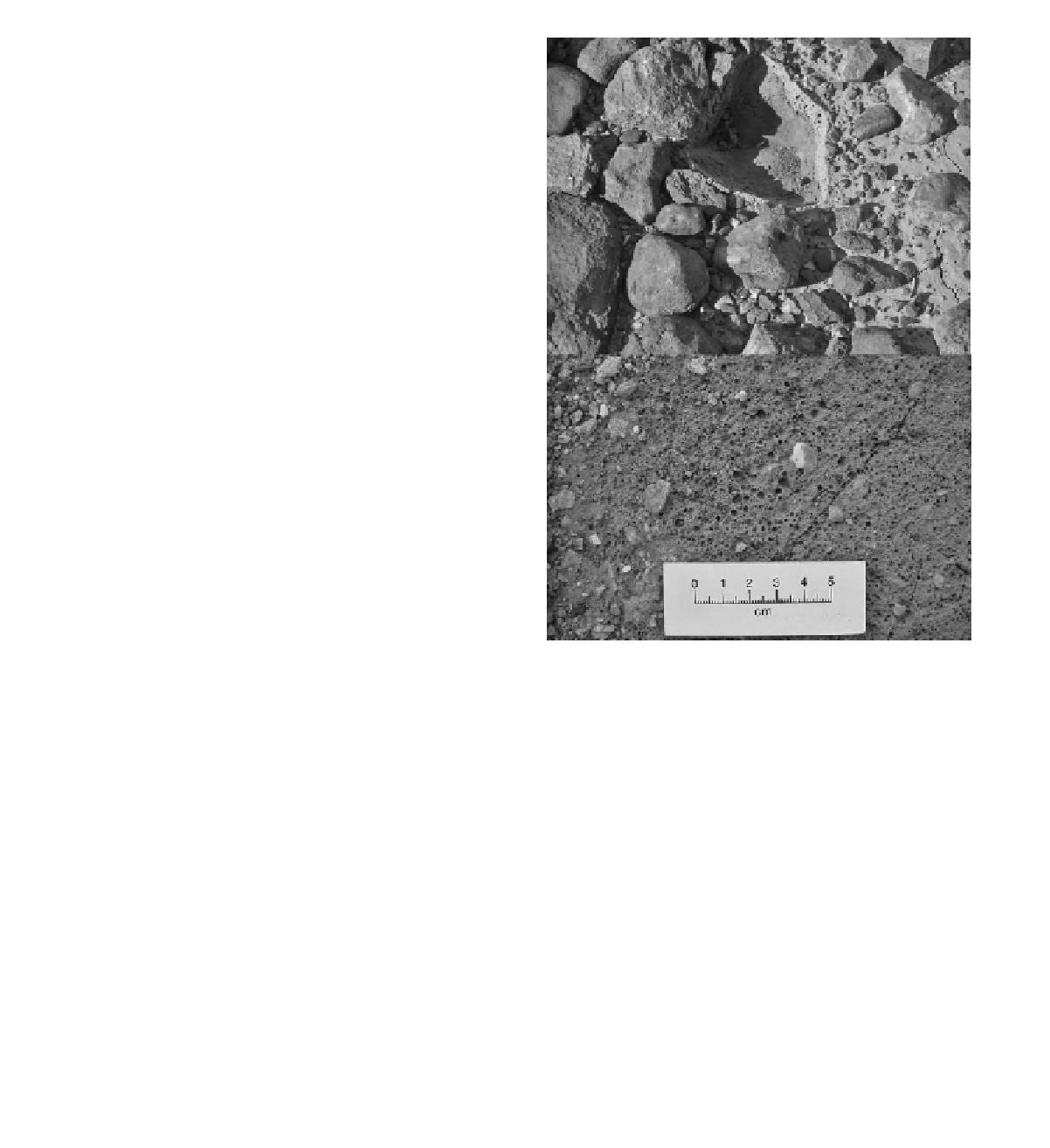Geoscience Reference
In-Depth Information
and not merely the mechanical strength properties of the
crusts themselves.
(a)
7.5.11
Possible effects of climate change on
biological soil crusts
Changes in temperature, atmospheric gas composition and
rainfall events and annual rain amount all have the po-
tential to affect BSCs. Impacts that reduce the cover or
integrity of these crusts have the potential to reduce the
soil surface stabilisation achieved in the drylands. Belnap,
Phillips and Smith (2007) reported that the concentrations
of the pigments that protect Mojave Desert cyanobacte-
ria from damage by the intense ultraviolet radiation in
sunlight were correlated with rainfall amounts. They rea-
soned that any decline in rainfall in coming decades has
the potential to diminish BSC cover owing to increasing
stress on the organisms, and perhaps mortality. It is then
possible to envisage effects of increasing dust fluxes on
the various aspects of the global climate mentioned at the
start of this chapter.
(b)
7.6
Vesicular soil structures
It has been noted earlier in this chapter that the effects of
seals and crusts on infiltration, overland flow and erosion
can only be evaluated in isolation in a somewhat artificial
manner, since in the field multiple parameters affect these
processes. Many dryland locations exhibit compound sur-
faces, where for instance a biological crust has developed
on a stabilised inorganic seal. Elsewhere, a patchwork of
seals and crusts may exist within quite small areas. Finally,
the effects of vascular plants may extend into the inter-
spaces where seals and crusts occur, modifying the prop-
erties of the soil materials through additional provision of
organic matter, the effects of root systems extending be-
yond the limits of the plant canopy and so on (e.g. Dunker-
ley, 2000). The role of surface stone mantles in modifying
infiltration and overland flow, as well as wind erosion,
have also been widely reported. Often vesicular horizons
are associated with surface stone cover, or with seals and
crusts, such as the 'coarse pavement crust' of Valentin and
Bresson (1992) (see Table 7.2). The vesicles form when
the reciprocal escape of air is hindered during the entry of
water into soils during rain or runon events. Positive air
pressure within the pore spaces of damp and deformable
soils results in pores of up to a few mm diameter, which
are roughly spherical (Figure 7.12). There vesicles re-
main air filled, even when the soil is saturated, and reduce
Figure 7.12
Vesicular layers in desert soils: (a) northern
South Australia, where a large stone has been removed from
this stony tableland soil to reveal the peripheral vesicles de-
veloped around the margins of the stone; (b) field of vesicles
lying beneath a fine gravel pavement, western NSW. The ve-
neer of stones has been carefully scraped away in order to
reveal the vesicular horizon beneath. Some desiccation cracks
traverse the image.
water downwards through the soil. Given that vesicular
layers signal limited air escape, they also indicate quite
low soil infiltrabilities. Given that dense cyanobacterial
crusts can cause vesicle formation in the underlying soil,
the recognition of the hybrid entity (BSC plus associated
vesicles) makes more functional sense than a treatment of
the two features separately.
It is clear that the presence of vesicular horizons imme-
diately below the sealed or crusted soil surface or under
pavement stones provides a throttle on infiltration. How-
ever, as mentioned previously, the hydrological effects of
a surface feature such as this, or of seals or crusts, can-
not be fully appreciated solely from local, onsite effects.
The partitioning of rainfall among infiltration, ponding or

